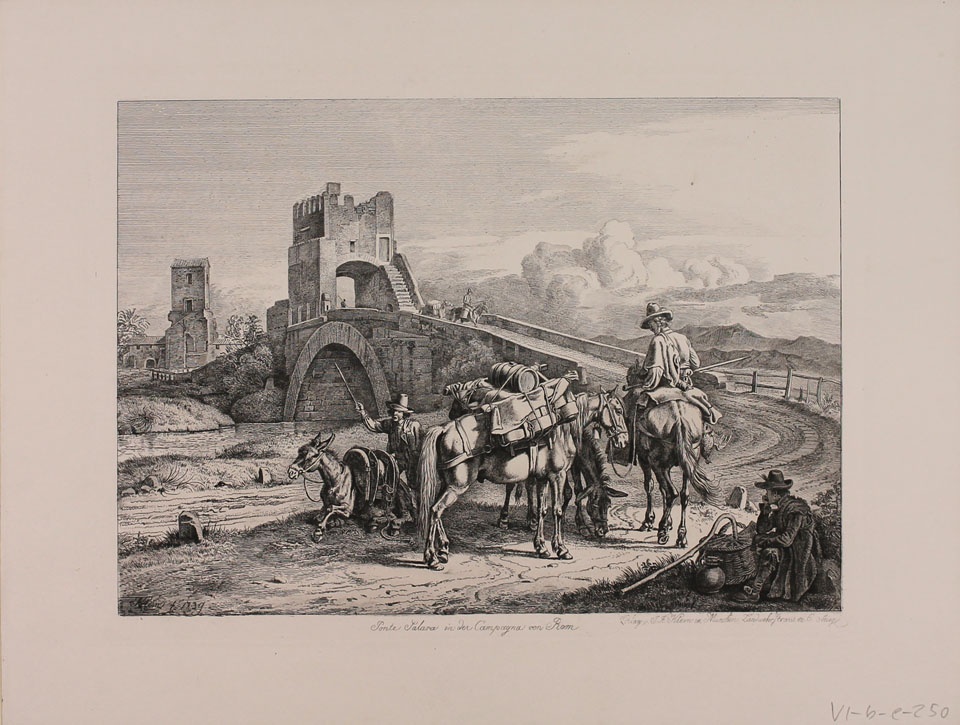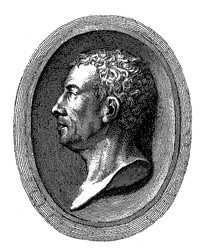Text u. M.: Ponte Salara in der Campagna von Rom
u.r.: Verlag v. J.A.Klein in München, Landwehrstrasse No. 6 3 Stiege
u.l.: JAKlein f. 1839
Das Bild stammt von
Johann Adam Klein (* 24. November 1792 in Nürnberg; † 21. Mai 1875 in München), einem deutscher Maler und Kupferstecher des Biedermeiers.
Auf einem Weg, der über eine große Steinbrücke führt befinden sich Reisende. In der Mitte sitzt ein Mann auf einem Pferd, er führt einen Esel und ein weiteres Pferd mit sich, beide schwer beladen. Dahinter treibt ein Knabe einen Esel mit einem Stock an. Rechts im Vordergrund ruht sich ein Mann im Schatten aus. Er hat seinen Korb und seinen Stock abgestellt und betrachtete die Reisenden auf der Straße.
Auf der Brücke im Hintergrund sind ebenfalls weitere Menschen zu sehen. Auf der anderen Seite des Flusses steht ein Gebäude.
en

